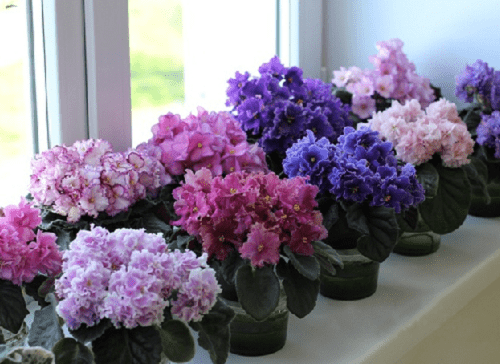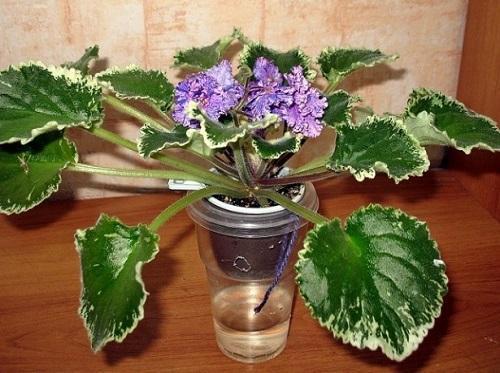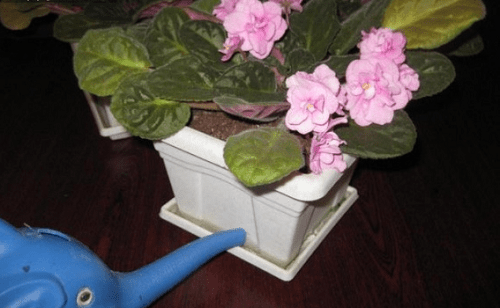Ways to water violets for their successful development
Violets or, as they are also called, saintpaulias have a rather capricious character, especially with regard to watering. Even small violations of the regime lead to the death of the flower.
Many factors affect the frequency and amount of watering. First of all, it is the temperature and humidity level in the room where the pot stands, as well as how bright the lighting is. The condition of the soil dictates the frequency of watering - the lighter the soil, the more often the plant needs watering. The same reaction of violets growing in earthenware. Unlike plastic, clay has the ability to "breathe", so water from such a pot evaporates faster.
It is necessary to increase the number and frequency of watering during periods of flowering violets, as well as when caring for young plants. A mature shrub requires less attention with regard to water.
Violets should be watered regularly (about twice a week) in the morning - in summer, and in winter - during the day. The soil in the pot is kept moist, while preventing moisture stagnation.

Florists use three methods of watering violets, each of which has its own pros and cons. These include:
- direct watering into the pot;
- wick watering;
- watering through the pallet.
Direct watering of violets into the pot

When using this method, the violet should be watered from a watering can or syringe with a thin stream of water until the sump is filled with drained water. A stream of water is directed to the soil at the very edge of the pot, preventing moisture from entering the plant itself (leaves, flowers, outlet). Leave the pot in the pan for 20 minutes, and then pour out the water that has not been absorbed.
Direct watering is good because harmful elements leave the pot along with water. However, there is a risk of wetting the flower, and violets do not like this and may die.
Wick irrigation

Often violets watered with a wick through which water enters the pot. To do this, lower the wick into a container with water, and insert its other end into the drainage hole in the pot. The pot itself is placed in such a way that it is above the container with water, but does not touch its bottom. An ordinary cord or a twisted strip of fabric is suitable as a wick.
The advantage of this method is that the plants themselves regulate the frequency and amount of watering depending on the temperature and humidity in the room. But, on the other hand, watering through a wick is not suitable for all varieties. In addition, in the cold season, the water in the container on the windowsill is very cooled, and violets do not like this either.
Wick irrigation is not suitable for violets growing in pots larger than 8 cm in diameter, as the plant will begin to grow large leaves and may stop blooming.
Watering through the pallet

Violets take watering through the pallet very well. Water can be poured gradually, as it is absorbed by the soil, or you can immediately put the pot in a container of water and leave for 15-20 minutes. The excess water in the pan that has not been absorbed is drained.
The nuances of watering violets through a wick - video